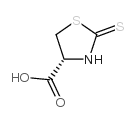| 结构式 | 名称/CAS号 | 全部文献 |
|---|---|---|
 |
(4R)-(-)-2-硫酮基-4-噻唑烷羧酸
CAS:98169-56-3 |
| 结构式 | 名称/CAS号 | 全部文献 |
|---|---|---|
 |
(4R)-(-)-2-硫酮基-4-噻唑烷羧酸
CAS:98169-56-3 |